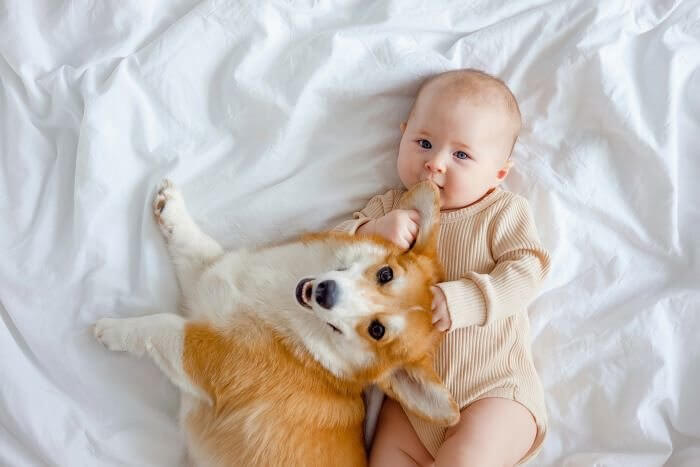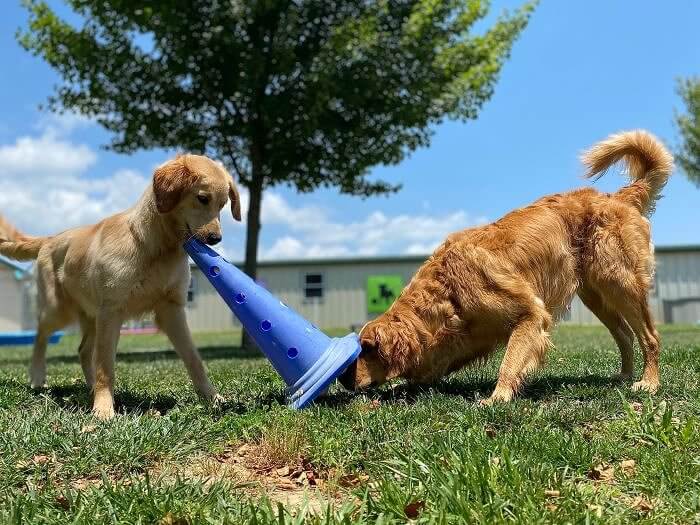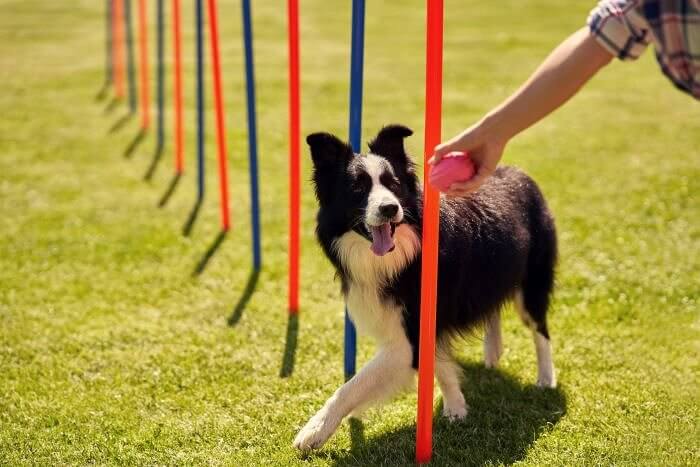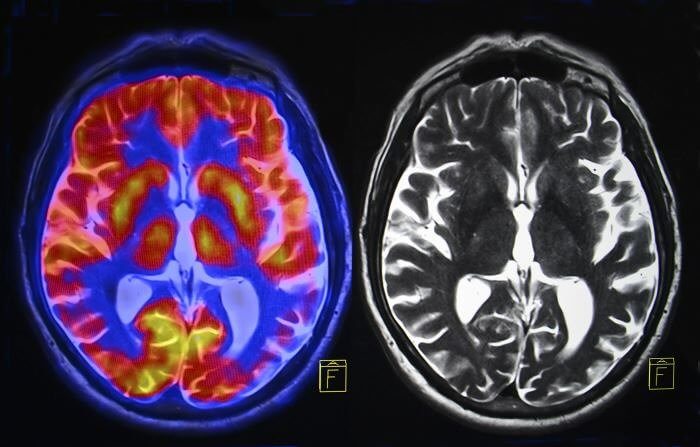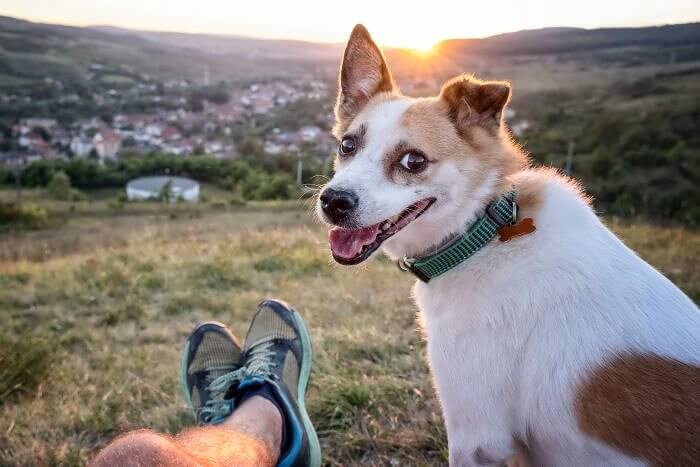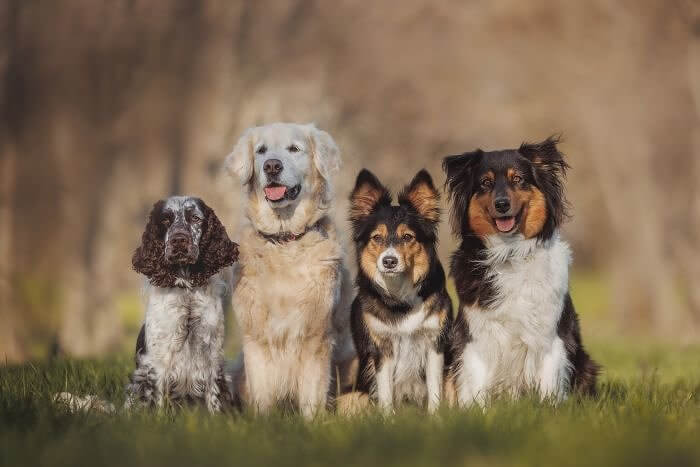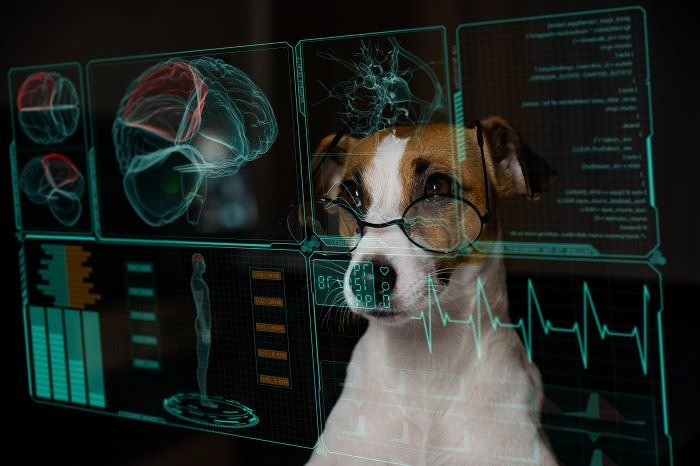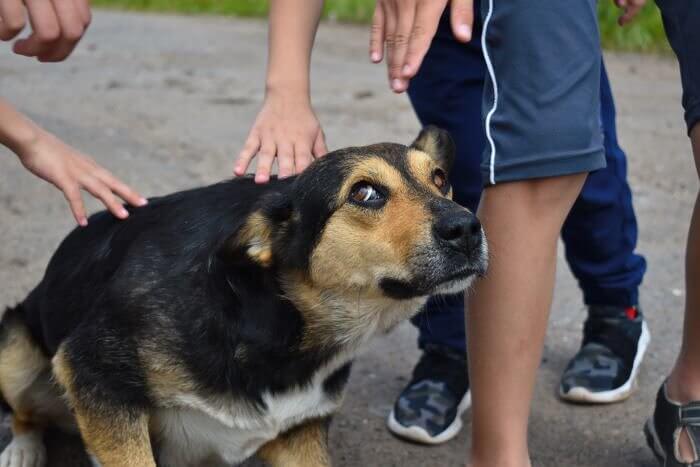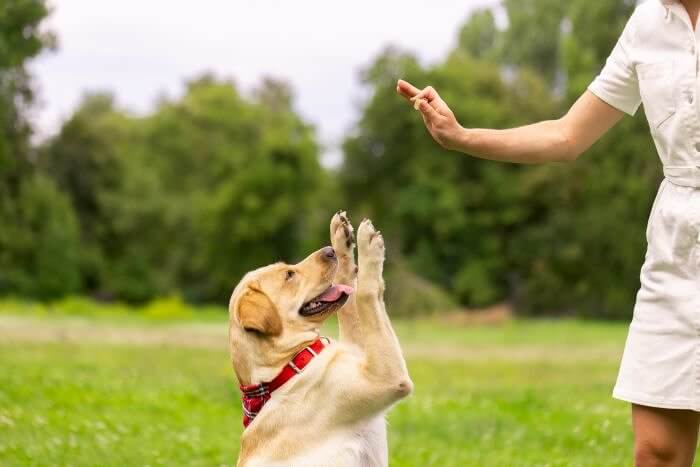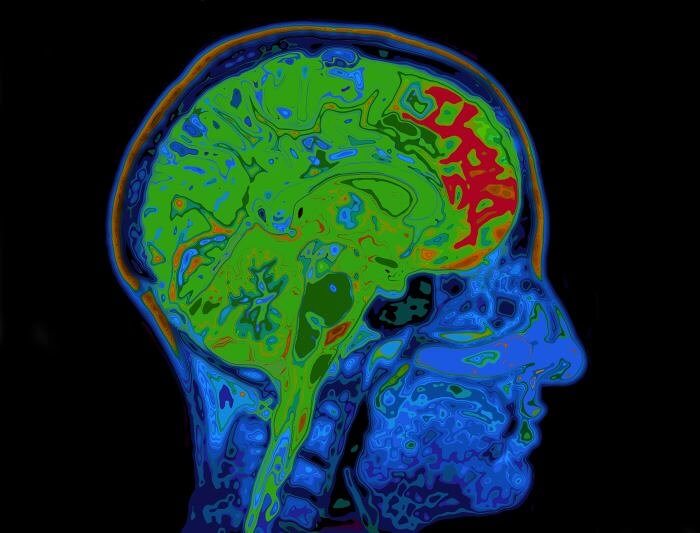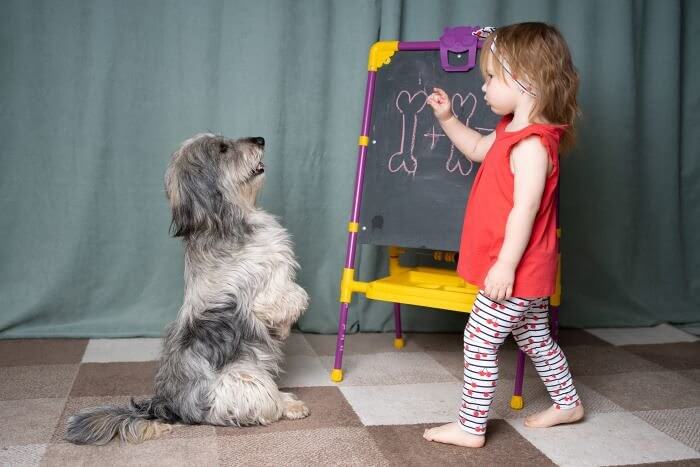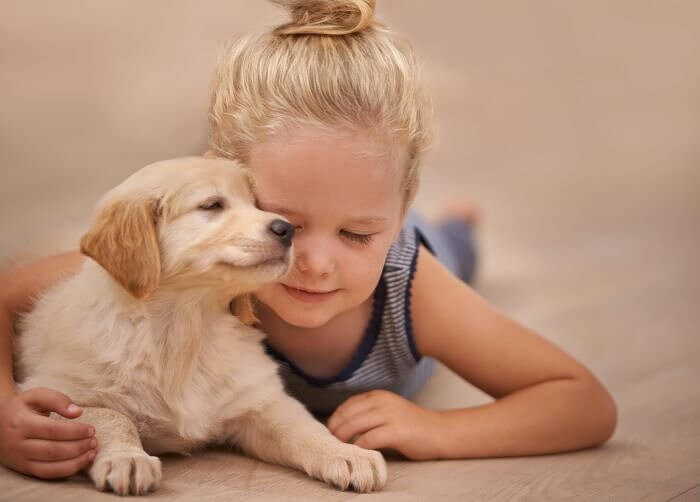The mysteries of the canine mind have long been a fascination for scientists and dog lovers alike. From wagging tails to loyal companionship, dogs can touch our hearts and enrich our lives! But how do their brains work, and what secrets do they hold? In recent years, groundbreaking research has enabled us to understand the inner workings of our four-legged friends. Scanning their brains has given us unique insights into the emotions that drive their behaviors. Join us as we explore over 30 fascinating discoveries that bring us closer to understanding the profound bond between humans and our beloved companions!
Babies and Dogs Are More Alike Than You Think
Dogs are like forever young toddlers when it comes to their brains. Just like a two-year-old child seeking comfort from their parents when scared or worried, dogs do the same with their human buddies. How adorable is that? Unlike many other domesticated animals, dogs don't run away from bad situations; they run straight to their owners, seeking reassurance. It's a beautiful testament to the strong bond they share with us.
So, when your dog comes to you for comfort or for help in a difficult situation, know that they are displaying their unique link with you and their remarkable intelligence!
Yes, Our Dogs Do Love Us
Research has proven that dogs genuinely love humans. They see them as part of their family. Dogs and people have formed strong emotional bonds over hundreds of years of living together. Studies at the University of Veterinary Medicine in Vienna show that dogs willingly perform tasks for their owners, and their brain's positive receptors light up when they’re praised. This unique bond with humans is attributed to the release of oxytocin, the "love hormone!"
Positive interactions foster a deep and affectionate relationship between dogs and their owners. The loving nature of dogs makes them invaluable family pets, reliable working dogs, and comforting therapy animals.
Dogs Rely More on Movement Than Color
Insights from scanning dog brains have revealed fascinating aspects of their visual processing abilities. Dogs see the world differently from us. While humans focus on colors, dogs care more about movement and contrast. This is because dogs evolved as hunters, and spotting moving prey against different backgrounds was crucial for their survival. Their brain is wired to be excellent at tracking, chasing, hunting down and finding things in motion.
Although dogs don't see colors as vividly as we do, they can detect moving objects from afar. So next time you play fetch with your dog, remember that they see the game in a whole different way!
Dogs “Do” Have a Concept of Time
Studies have suggested that dogs possess a sense of time, allowing them to anticipate events based on their timing. They can pick up on regular schedules and routines, like knowing when it's time for walks, meals, or playtime. Dogs may even wait by the door when they sense their owners returning from work. This ability could be linked to their keen sense of smell and hearing, helping them detect subtle cues that signal certain events.
While their perception of time may not be as precise as humans, dogs' internal clocks and awareness of routines help them navigate their daily lives and form a closer bond with their owners.
Dogs’ Brains Are Glowing With Joy
Isn't it amazing how playtime makes dogs so happy? When they have fun and play, their brains literally light up with joy! Scientists have scanned their brains and found that certain areas light up when they engage in playful activities. Just like how laughter fills our hearts with happiness, playtime has a similar effect on our furry friends. Those brain signals indicate that they're truly enjoying themselves and feeling pure pleasure!
Play is essential for dogs' well-being as it helps them release pent-up energy and reduce stress. When they play, their brains produce feel-good chemicals that contribute to their overall happiness and contentment.
Help Shape Your Dog’s Mind
Training is like a superpower that allows you to shape not only your dog's behavior but also his brain structure. Brain scans have shown that training has a profound impact on the brains of dogs. When dogs undergo training, specific brain regions become more active, and the connections between different parts of the brain strengthen. This neuroplasticity enables dogs to enhance their cognitive abilities, such as problem-solving, memory, and learning.
Dogs' brains shift and grow when they learn new tricks, just like ours do when we learn something new. Keep training sessions short but frequent so your dog will stay interested during lessons.
Dogs and People Have Very Similar Brain Structures
Dogs and humans exhibit striking parallels in brain structure, prominently featuring the cerebral cortex, which is responsible for intricate cognitive functions. This likeness suggests the potential for shared cognitive abilities. Like humans, dogs process emotions through brain regions such as the amygdala, suggesting their capacity for emotional experiences. Moreover, their highly developed olfactory center empowers dogs with exceptional scent detection abilities. Recognizing familiar faces, both human and canine, further showcases their social intelligence.
These fascinating similarities not only highlight the deep bond between dogs and humans but also underscore the potential for complex cognitive and emotional connections in both species.
Dogs Are Full of Empathy
Insights from scanning dog brains reveal fascinating evidence of empathy in these loyal companions. Just like humans, dogs can understand and respond to the emotions of others, showing a remarkable ability to feel and connect with us. When you're sad or happy, your dog might sense it and react with comfort or joy. This emotional connection is possible because certain brain regions in dogs light up when they encounter someone else's feelings.
The discovery of empathy in dog brains adds to our appreciation for these remarkable animals. So, next time you're feeling down, know that your dog is there, understanding and supporting you with true empathy.
A Keen Sense of Smell
Dogs boast an exceptional sense of smell, and interestingly, they prioritize the scent of their owners above all others. With their 300 million olfactory receptors, far surpassing humans' six million, canines use their acute sense of smell to navigate and understand their surroundings, as well as to interact with humans. A study revealed that dogs distinguish between the scents of familiar humans and other dogs, showing a clear preference for their owners' scent.
Upon smelling their owner, dogs' brains send signals to the reward area, underscoring the scent's emotional significance. This special connection adds more evidence of the deep love shared between dogs and their humans.
Dogs Can Read Your Emotions Just by Looking at Your Face
Recent studies have found that dogs can tell if someone is happy or not just by looking at their face. Dogs also pay attention to where humans are looking. When we look at them, they pay more attention to us, just like having a conversation without words. This shows how well dogs understand our emotions and how they communicate with us using their amazing senses. It's like they have a special connection with us humans!
So, keep your faces out in the open to better connect with your furry buddies. By doing so, your dog will be more likely to understand and respond to your feelings.
Bonding Hormone
When scientists scanned the brains of dogs, they discovered the fascinating role of the "bonding hormone," oxytocin. Just like in humans, oxytocin plays a significant role in creating strong emotional connections and bonding experiences. When dogs and humans engage in positive interactions like cuddling, playing, or sharing affectionate gazes, oxytocin levels rise in both their brains. This hormone acts like a magical "love potion," strengthening the emotional bond between dogs and their human companions.
The more we shower our dogs with love and positive interactions, the more their brains respond with happiness. It's a beautiful cycle of love that brings humans and dogs even closer together.
Dogs Process Sound the Same Way People Do
Ever wondered how your furry friend hears and understands the world around them? Well, dog brains are quite remarkable! They process sound in a way that's quite similar to how we do. When dogs hear a sound, like their favorite squeaky toy or your cheerful voice, their ears catch the sound waves, sending them to their brains. In the brain, different areas light up and work together to make sense of the sound.
Just like us, dogs can distinguish between various sounds and words. So next time you talk to your dog, know that their brain is hard at work, processing every word you say!
Brain Functions May Vary From Breed to Breed
Did you know that different dog breeds have unique brains too? Yep! Their brain structures and how they work can vary depending on their breed. It's like how some dogs are super energetic and playful, while others might be more laid-back and calm. For example, some breeds are great at herding because their brains are wired for it, while others excel at sniffing because their brain's scent-processing area is top-notch!
These brain differences can be connected to their special behaviors. So next time you meet a cute pup, remember that their brain might be designed for their own special talents and traits.
Dogs Have an Amazing Built-In Navigation System
Have you ever wondered how your furry friend seems to know their way around without a map? Well, that's because dogs have amazing navigation skills! Scientists have used special brain scans to study how dogs find their way. They discovered that a part of their brain called the hippocampus is like a GPS system. It helps dogs remember places they've been before, creating a mental map in their minds.
This explains why rehomed dogs frequently return long distances after being moved. So, remember that the next time you take your dog on a walk, you already have a map with you!
Dogs Remember Past Experiences and Learn From New Ones
The learning and memory capabilities of dogs are primarily attributed to the hippocampus, an essential brain region responsible for processing and storing information. Dogs exhibit impressive memory skills, enabling them to remember past experiences and learn from new ones. Studies have shown that dogs can remember people, places, and even commands over extended periods of time. This capacity for learning contributes to their ability to be trained for various tasks and commands.
With the ability to remember, these animals make for savvy and loyal companions. But if you want your dog to remember and benefit from its experiences, you need to treat it nicely.
Dominance and Submission
The idea of dominance in dogs is often misunderstood. However, through brain scans and behavioral studies, we've learned that dominance is not about being aggressive or controlling but rather about a dog's confidence and leadership. In social interactions, dominant dogs tend to show more confident behaviors, and their brains may exhibit specific patterns of activity. On the other hand, submissive dogs display more deference and may have different brain responses in certain situations.
These findings suggest that dominance and submission are not just behaviors, and it’s not a matter of training or socialization; these concepts have a basis in the way their brains are wired.
Dogs Have Sleep Patterns Similar to Humans
Ever wondered if dogs dream? Well, they sure do! Dogs, like humans, go through various stages of sleep, including Rapid Eye Movement (REM). During REM, the brain activity in dogs indicates that they are likely experiencing dream-like states. You may notice your dog twitching, moving its paws, or making small noises while asleep. It's believed that during this stage, dogs process information and memories just like we do in our dreams.
So, when you see your dog twitching or making noises in their sleep, they could be immersed in a dream world, just like we are! They’re probably chasing rabbits!
Worried or Frightened Dogs Can Suffer From Anxiety
You know how stress can make us humans feel all jittery and uneasy? Well, guess what? Dogs can feel it too! Insights from scanning dog brains reveal that being anxious or stressed changes brain activity, which is strikingly comparable to the effects of stress on people. These scans help us understand the neurological basis of their emotions, showing that dogs can suffer from anxiety and stress just like we do.
With this knowledge, we can really be there for our dogs when they're going through tough times. Only by showing kindness and consideration can we significantly improve our dogs' lives.
Are Dogs Self-Aware?
The mystery of self-awareness in dogs has always puzzled scientists. But insights from scanning dog brains have sparked a debate about dogs' sense of self-awareness all over again. Self-awareness means understanding that "I" exist as an individual being. Humans have this ability, which is why we recognize ourselves in mirrors. But with dogs, it's a bit tricky. Some experiments show that dogs might recognize their own scent or understand their bodies.
Their level of self-awareness, however, is still up for debate. While dogs are incredibly clever and emotionally connected to us, understanding their core identity remains a challenge yet to be discovered.
Positive Reinforcement
Dogs are big fans of positive reinforcement, and their brains just love it too! When they have happy interactions with other dogs, humans, or even other animals, their brain releases special chemicals like dopamine, which activates the dog's reward system. This activation makes dogs more likely to seek out and repeat these positive social interactions in the future. The reward system in the brain plays a significant role in shaping behavior and learning.
So, when you give your pup praise or yummy treats for doing something good, their brain's reward system lights up like fireworks! But there's even more cool stuff about the dog's brain and reward system!
Humans And Dogs Share The Same Reward Center In The Brain
Want to learn something really amazing about the brain's reward system? It has been shown that the pleasure and reward systems in humans and dogs are very similar! It's like we're wired for joy and happiness in the same way. In both humans and dogs, this reward center is known as the "mesolimbic pathway." When we experience something pleasurable or rewarding, this pathway lights up with excitement and happiness but stays dark for non-treat signals.
So, when you show love and affection to your furry friend, not only does their brain release feel-good chemicals, but they also share a similar brain response to rewards as we do!
Trust and Dependence
Dogs' profound confidence in and reliance on their human friends has been illuminated by brain scans in fascinating ways. Dogs share a special bond with us, much like the relationship between young children and their parents. Just as children depend on their parents for love, care, and guidance, dogs rely on their owners for similar needs. They look to us for food, shelter, and emotional support, forming a strong sense of attachment and trust.
This reliance on their human pack helps them feel secure and loved, allowing them to thrive and be happy. It’s how children feel when they’re reassured by their parents' presence.
Dogs Will Look You Straight in the Eyes
When scientists scanned dog brains, they found something truly special: dogs are one of the only few primate animals that love gazing into our eyes! Dogs' tendency to look directly into human eyes is widely believed to have begun during the first stages of domestication. Dogs have a long history with humans, so they have learned to communicate with us through nonverbal cues such as eye contact. They’re watching us closely!
It's like they're trying to connect with us on a deeper level. Scientists continue to study the underlying mechanisms and brain activity associated with eye contact and social bonding in dogs.
Dogs Are Fantastic Problem Solvers
Dogs are excellent problem solvers, and their cognitive abilities are truly impressive. They have a knack for figuring things out, and they can adapt their problem-solving strategies based on the situation. Their problem-solving skills are not limited to simple tasks. Dogs have shown the ability to navigate complex situations and challenges. For example, some dogs can learn to open latches or even perform tasks that require understanding multiple steps.
Moreover, studies have shown that a dog's breed might play a part in their intelligence, but all dogs have the ability to solve problems. They're much more like us humans than we previously thought.
Understanding of Social Hierarchy
When researchers scan dog brains, they make intriguing discoveries about the social dynamics of dogs. Dogs, being descendants of wolves, are inherently social animals with a well-defined social hierarchy within their packs. In the canine brain, the areas associated with social interactions and hierarchies are activated during social encounters. This suggests that dogs have a keen awareness of their place within the pack and their relationships with other dogs and humans.
Moreover, studies have shown that dogs can recognize and respond to human social cues. This social intelligence enables dogs to live harmoniously in human households, understanding their place within the family.
Canine Alzheimer's
Did you know that dogs can also experience something like Alzheimer's disease in humans? It's called Canine Cognitive Dysfunction (CCD). Just like Alzheimer's, CCD affects older dogs and causes their brains to decline over time, affecting their cognitive abilities. Through brain scans, researchers have gained valuable insights into the neurobiology of CCD. They have observed specific changes in the brains of affected dogs, including the presence of abnormal protein deposits and reductions in certain neurotransmitters.
CCD is a condition that shares similarities with Alzheimer's. It affects older dogs and results in cognitive decline, which can include memory loss, disorientation, changes in social interactions, and altered sleep patterns.
Dogs Are Natural Risk Assessors
Dogs are not just adorable companions; they are also keen risk assessors. Their ability to recognize and respond to danger is hardwired into them, just as it was for their wild ancestors. The brain's amygdala and prefrontal cortex, among others, play a role in weighing potential dangers. The prefrontal cortex is responsible for making decisions and weighing the outcomes of those decisions, while the amygdala helps dogs process emotions and recognize potential risks.
Your dog's brain performs a rapid assessment whenever it encounters something new or potentially threatening. They may become alert, bark, or even retreat to a safer spot when feeling threatened.
Our Furry Friends Can Be Quite Cunning
Deception in dogs? How fascinating! Some studies have indeed suggested that our furry friends may have a few tricks up their sleeves when it comes to deception. For example, a dog might pretend not to notice a treat on the floor, only to snatch it when no one is looking. Or, during play, they may trick their playmate by pretending to go one way but suddenly changing direction to catch them off guard.
Interestingly, during such deceptive acts, certain brain areas associated with problem-solving and social cognition light up. This indicates that their brains are actively working to plan and execute their clever schemes!
Brain Asymmetry
Just like us humans, dogs can also show brain asymmetry, meaning certain brain functions are more dominant in one hemisphere of their brain than the other. For instance, studies have suggested that dogs, like some humans, might have left - brain dominance for processing positive emotions and social cues. This means that when they're experiencing happy moments or engaging in social interactions, their left brain might be more active.
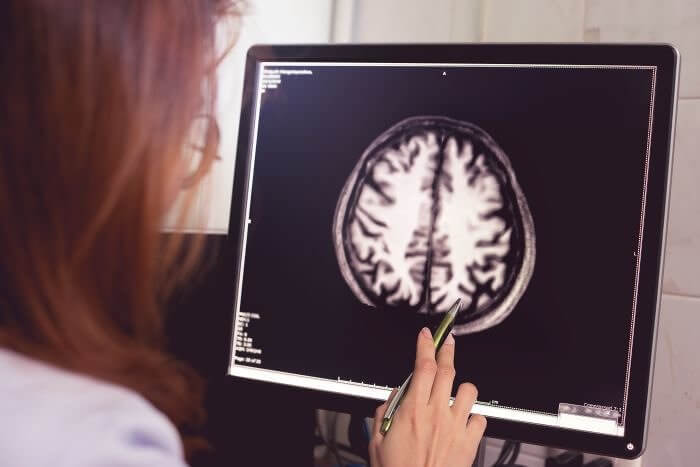
On the other hand, their right brain may be more dominant when responding to threats or fearful situations. This brain lateralization helps dogs process multiple sorts of information and adapt to diverse settings.
Sensational Overload Is a Real Thing for Dogs
Just like humans, dogs can experience sensory overload in certain situations. When they encounter an overwhelming amount of sensory information, their brains can become overstimulated, leading to various reactions. During sensory overload, brain scans may reveal heightened activity in certain brain regions associated with processing sensory information. This can include areas responsible for vision, hearing, smell, and touch. Sensory overload can happen in environments with loud noises, bright lights, strong smells, or crowded spaces.
When researchers scan their brains under these conditions, their brains exhibit responses to sensory overload, like certain areas getting all fired up! It's like their brain circuits are saying, "Whoa, that's a lot to handle!"
Dogs Are Masters of Sensory Integration
Isn't the doggy brain incredible? When scientists scanned their brains, they found something mind-blowing: dogs are pros at sensory integration! Dogs can seamlessly blend information from various senses like sight, smell, and hearing to process their surroundings. This unique ability allows them to understand and respond to complex environments. It also contributes to their incredible hunting skills, emotional understanding, and strong social connections with both humans and other animals.
For example, when a dog sees a squirrel, they not only rely on their vision but also combine it with their acute sense of smell and sharp hearing to track the squirrel's movements.
Dog Brains Have Evolved To Become Our Best Buddies
You see, dogs are descendants of wild wolves, but over thousands of years, they've become our loyal companions. By scanning their brains and comparing them to those of their wolf ancestors, scientists have discovered fascinating insights. Through domestication, certain brain regions in dogs have evolved, making them more attuned to human emotions and social cues. Their brains have adapted to read our facial expressions, understand our gestures, and even recognize our voices.
These changes in their brains reflect the unique bond that has formed between dogs and humans. They have learned to live with us, come to understand us, and become valuable additions to our civilization.

